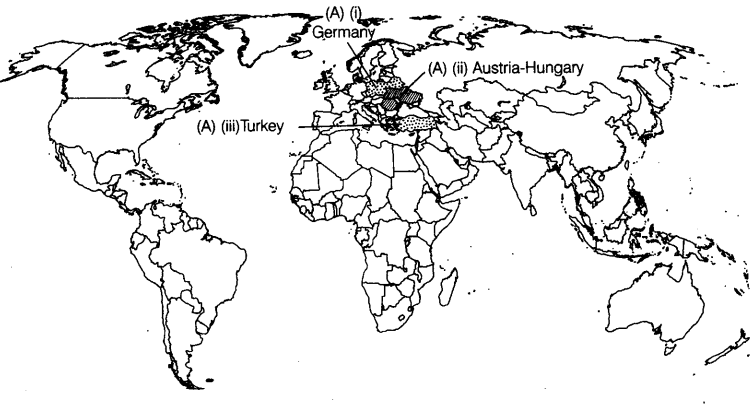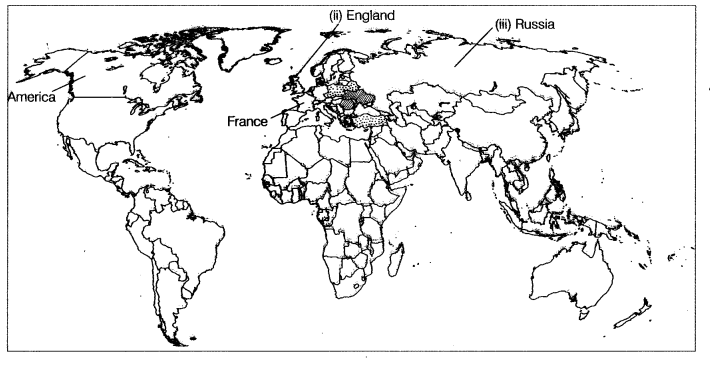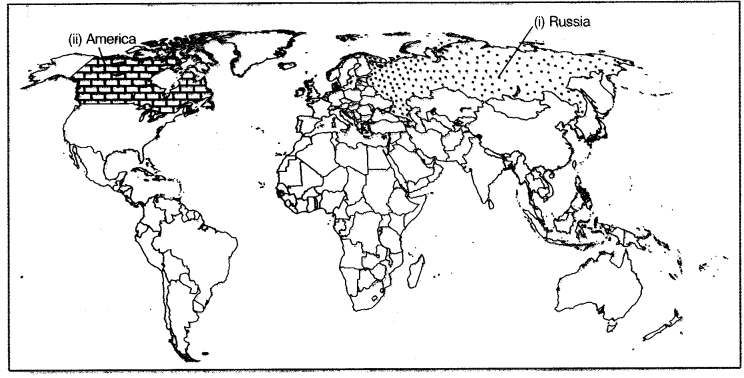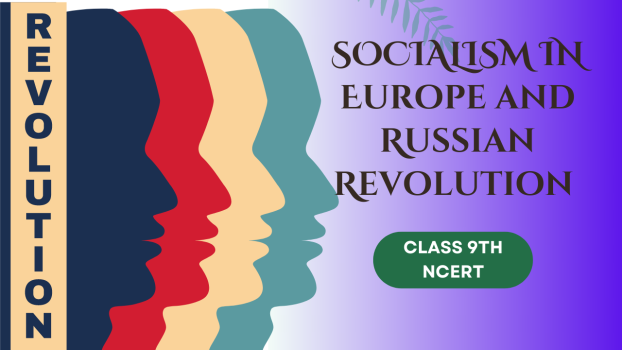We, in this article, have provided short and detailed notes of Socialism In Europe And The Russian Revolution Class 9 Social Science along with the essential key terms, map work, and ncert solutions. Students can get help and go through before their exams to get the gist of the concepts and be prepared for their examinations.
We will focus on the social change that took place in Russia, the Russian revolution, February revolution, and October revolution, and also lay emphasis on how the civil war broke out. This article will study all the events followed one after the other and their effects.
Socialism In Europe And The Russian Revolution Class 9 Important Key Terms
- Suffragette Movement- A movement to give women the right to vote.
- Jadists- Muslim reformers within the Russian Empire.
- Real Wage- Reflects the number of goods that a person buys.
- Autonomy- The right to govern themselves.
- Nomadism- people who do not live in one place and move from one place to another for their living.
- Deported- Forcibly removed from one’s own country.
- Exiled- Forced to live away from one’s own country.
THE AGE OF SOCIAL CHANGE
The French Revolution opened the possibility of creating a dramatic change in how society was structured. Not everyone in Europe, however, wanted a complete transformation. Some were ‘conservatives’, while others were ‘liberals’ or ‘radicals’. We will look briefly at some important political traditions of the nineteenth century.
Liberals: Wanted a nation that tolerated all religions. They were against the uncontrolled power of the dynastic rulers. They wanted rights to be enjoyed by the individuals.They wanted an elected parliamentary government, subject to laws interpreted by a well-trained judiciary that was independent of the control of the dynastic rulers and officials. But they were not democrats because they did not believe in a universal adult franchise.
Radicals: Wanted a nation in which the government was based on most of a country’s population. They disliked concentration of property in a few hands, not the existence of private property.
Conservatives: They resisted change. After the revolution, they started accepting change provided it was slow and had links and respected the past.
Industries and Social Change: This was a time of economic and social change. With the advent of the industrial revolution, men, women and children were pushed into factories for low wages and longer working hours. Liberals and radicals who were factory owners felt that efforts must be encouraged so that the benefits of industrialization should be passed on to workers.
Socialism in Europe: Socialists were against private property and saw it as the root cause of social evils. They had different visions of the future. Some believed in cooperatives, some demanded that governments must encourage cooperatives.
Karl Marx and Friedrich Engels added that industrial society was capitalist. Marx believed that a socialist society would free the workers from capitalism. This would be a communist society.
Support for Socialism Socialists formed an organization called ‘Second International’ to spread socialist ideas. Workers in Germany and England began forming associations to fight for better living conditions. They demand a reduction of working hours and the right to vote.
THE RUSSIAN REVOLUTION
In 1914, Tsar Nicholas II ruled the Russian empire.
Economy and Society: At that time, Russia was an agriculture-based economy. Industries were being set up, which was the mostly private property of industrialists. Workers were divided into groups but they did unite to strike work when they were dissatisfied. Peasants had no respect for nobility, very unlike the French peasant. Russian peasants were the only peasant community that pooled their land and their commune divided it.
Socialism in Russia: All political parties were illegal in Russia before 1914. The Russian Socialist Democratic Labour Party was formed in 1898. It struggled to give peasants their rights over land that belonged to nobles. Land got divided among peasants periodically which made them natural socialist and it was felt that peasants and not workers would be the main source of the revolution. Lenin did not agree with this as he felt that peasants were not one social group. The party was divided into Bolsheviks and Mensheviks.
The 1905 Revolution: Russia was an autocracy. The Tsar was not subject to the parliament. Liberals wanted to end this state of affairs. They worked towards demanding a constitution during the Revolution of 1905.
Bloody Sunday: Prices of essential goods rose so quickly by 1904 that the real wages declined by 20%. During this time, four members of the Putilov Iron Works were dismissed. The action was called for. Over 110,000 workers in St. Petersburg went on strike, demanding a reduction in working hours and an increase in wages. The procession was led by Father Gapon.This procession was attacked by the police and Cossacks. Over 100 workers were killed. Strikes took place as a reaction. People demanded a constituent assembly.
The Tsar allowed the creation of an elected consultative Parliament or Duma. The Tsar dismissed the first Duma (Russian Parliament) within 75 days and announced the election of a second Duma.
The First World War and the Russian Empire: The war was initially very popular in Russia, but later the support grew thin. Russian armies lost badly in Germany and Austria. There were 7 million casualties and 3 million refugees in Russia.
Industries were also affected and all suffered huge loss of workers and manual laborers. This leads to closing down of small workshops and in turn leads to shortage of grains and bread.
THE FEBRUARY REVOLUTION IN PETROGRAD
Events
- In the winter of 1917, Petrograd was grim. There was food shortage in the workers’ quarters.
- On 22 February , factories were closed. Workers of 50 other factories joined in sympathy. Women also led and participated in the strikes. This came to be called the International Women’s Day.
- Men surrounded the government buildings and quarters and the government imposed curfews in many places.
- On the 24th and 25th, the government called out the cavalry and police to keep an eye on them.
- On 25th February, the government suspended the Duma and politicians spoke against this measure. The people were out with force once again.
- On 27th, the police headquarters were ransacked.
- Cavalry was called out again however it refused to fire on demonstrators.
- A delegation went to meet the Tsar, military commanders advised him to abdicate.
- The Tsar abdicated on 2nd March.
- A Provincial Government was formed by the Soviet and Duma leaders to run the country.
The people involved were the parliamentarians, workers, women workers, soldiers and military commanders.
Effects
- Restrictions on public meetings and associations were removed.
- Soviets were set up everywhere.
- Committees were formed and were asked about the solutions to run the factories .
- Soldiers’ committees were formed in the army.
- Bolshevik influence grew. It decided to take stern measures against the spreading discontent.
- It resisted attempts by workers to run factories and arrested leaders.
- Peasants and the socialist revolutionary leaders pressurized for a redistribution of land. Land committees were formed and peasants seized land between July and September 1917.
OCTOBER REVOLUTION
- 16th October 1917 — Lenin persuaded the Petrograd Soviet and Bolshevik Party to agree to a socialist seizure of power. A Military Revolutionary Committee was appointed by the Soviets to organize the seizure.
- Uprising began on 24th of October. Prime Minister Kerenskii left the city to summon troops.
- Military men loyal to the government seized the buildings of two Bolshevik newspapers. Pro-government troops were sent to take over telephone and telegraph offices and protect the Winter Palace.
- In response, the Military Revolutionary Committee ordered to seize government offices and arrest the ministers.
- The ‘Aurora’ ship shelled the Winter Palace. Other ships took over strategic points.
- By night the city had been taken over and ministers had surrendered.
- All Russian Congress of Soviets in Petrograd approved the Bolshevik action.
- Heavy fighting in Moscow — by December, the Bolsheviks controlled the Moscow – Petrograd area.
The people involved were Lenin, the Bolsheviks, and troops (pro-government).
Effects
- Most industries and banks were nationalized in November 1917.
- Land was declared social property and peasants were allowed to seize the land of the nobility.
- Use of old aristocratic titles was banned.
- New uniforms were designed for the army and officials.
- Russia became a one-party state.
- Trade unions were kept under party control.
- A process of centralized planning was introduced. This led to economic growth.
- Industrial production increased.
- An extended schooling system developed.
- Collectivization of farms started.
The Civil War — When the Bolsheviks ordered land redistribution, the Russian army did not like this idea and began to break up. Non-Bolshevik socialists, liberals and supporters of autocracy condemned the Bolshevik uprising. They formed their troops and were called ‘Greens’, fighting against Bolshevik ‘Red’. The pro-Tsar‘ Whites” controlled most of the Russian empire. They were supported by French, American, British and Japanese troops. All these fought a war with the Bolsheviks.
Making a Socialist Society — The Bolsheviks kept industries and banks nationalized during the civil war. A process of centralized planning was introduced. Rapid construction and industrialization started. An extended schooling system developed.
Stalin and Collective Farming — Stalin believed that rich peasants and traders stocked supplies to create a shortage of grains. Hence, collectivization was the need of the hour. This system would also help to modernize farms. Those farmers who resisted collectivization were punished, deported or exiled.
GLOBAL INFLUENCE
By the 1950s, it was recognized in the country and outside that everything was not in keeping with the ideals of the Russian revolution. Though its industries and agriculture had developed and the poor were being fed, the essential freedom to its citizens was being denied. However, it was recognized that social ideals still enjoyed respect among the Russians. But in each country, the ideas of socialism were rethought in various ways.
NCERT Solutions For Class 9 Socialism In Europe And The Russian Revolution
Q1. What were Russia’s social, economic, and political conditions before 1905?
The following were Russia’s social, economic, and political conditions before 1905.
(a) Social Conditions: The majority religion was Russian Orthodox Christianity which had grown out of the Greek Orthodox Church. But the empire also included Catholics, Protestants, Muslims and Buddhists. The non-Russian nationalities were not treated equal to that of Russian nationalities. They were not allowed to follow their culture and language. Workers were divided into groups based on skill and training.
(b) Economic conditions: Russian economy was based on agriculture. They mainly export grains and some prominent industries that flourished that time were st. Petersburg and Moscow. Much of the production was done by the craftsmen.. With the expansion of the Russian rail network, foreign investment in factories grew. There was huge coal, iron and steel production. The workers were exploited by capitalists and filled their pockets with the profits that are earned by the workers, and they are left miserable.
(c) Political Conditions: Russia was a monarchy. (Tsar Nicholas II ruled Russia and its empire that extended to current-day Finland, Latvia, Lithuania, Estonia, parts of Poland, Ukraine and Belarus. It stretched to the Pacific and comprised today’s Central Asian states, as well as Georgia, Armenia and Azerbaijan). The Tsars believed in the divine rights of kings. They were not responsible to the Parliament. All political parties were illegal in Russia.
Q2. In what ways was the working population in Russia different from other European countries before 1917?
- The working population in European countries was a more united lot than those in Russia. They formed associations and fought for better living and working conditions. Funds were set up by these Associations to help workers in distress.
- The workers in European countries were united in their demand for a reduction of working hours and the right to vote. Workers’ associations also supported political parties and ultimately formed political parties themselves.
- In total contrast to the working population in Europe, the Russian workers were not united. Workers were divided based on their occupation.
- Workers whose jobs needed skill and training considered themselves on a higher plane than the untrained workers.
- Workers had strong links to the villages they came from and this also caused a social divide among workers.
- Workers’ associations rose dramatically in Russia also and they started demanding reduction in working hours and increase in wages.
Q3. Why did the Tsarist autocracy collapse in 1917?
- Russia suffered shocking defeats on the waterfront with millions of casualties. Crops and buildings were destroyed by the Russian army to prevent the enemy having any advantage. It led to millions of refugees.
- The Tsar was held responsible for this situation. Food shortage led to people rioting for food. The Russian army too shifted its loyalty and began supporting the revolutionaries.
- A lockout took place at a factory on the right bank of Neva river in sympathy with the workers on the left bank on 22nd February.
- Women led the way to strikes. The government imposed a curfew. Later the government suspended the Duma which resulted in sharp protests. The demonstrators ransacked the Police Headquarters and raised slogans about bread, wages, better hours and democracy.
- The government called the cavalry but they refused to fire on the demonstrators. Soldiers and the striking workers gathered to form a ‘Soviet’ or ‘council’ in the building where the Duma met.
- This was the Petrograd Soviet. The very next day, when a delegation went to see the Tsar, the military commanders advised the Tsar to abdicate.
- Soviet leaders and Duma leaders formed a Provisional Government to run the country. The Tsarist autocracy thus collapsed in February 1917.
Q4. Make two lists: one with the main events and the effects of the February Revolution and the other with the main events and effects of the October Revolution. Write a paragraph on who was involved in each, who were the leaders and what was the impact of each on Soviet history.
February Revolution:
- 22 February: Factory lockout on the right bank.
- 23 February: Sympathy strike by workers in 50 factories.
- 24th & 25th: Strikers stage demonstrations. Police called out to suppress the workers.
- 25th: The government suspends the Duma.
- 27th: Police Headquarters ransacked by the workers. Regiments support the workers. Striking workers from the Petrograd soviet.
- 2nd March: The Tsar abdicates. Soviet and Duma leaders form the Provisional Government.
Effects:
- Army officials, landowners, and industrialists became influential.
- Restrictions on public meetings were removed.
- Trade unions grew in number.
October Revolution:
16th October:
- Vladimir Lenin, the Bolshevik leader persuades the Petrograd Soviet and the Bolshevik Party to agree to a socialist seizure of power.
- A Military Revolutionary Committee was appointed by the Soviet
24th:
- The uprising against the Provisional government begins.
- The Military Revolutionary Committee seized government offices and arrested ministers.
- The winter palace was shelled.
- Ministers of the Provisional government surrendered.
- The Bolsheviks gained control.
Effects:
- Industries and banks were nationalised.
- Russia became a one-party state. The single party being the Bolshevik Party.
During the February Revolution, the factory workers and the Government Regiments played an important role. This all led to the downfall of the monarchy in Russia and establishment of Petrograd Sooviet.
Vladimir Lenin, the Bolshevik leader, played a major role during the October revolution. The Bolshevik Party overthrew the Provisional Government and gained power. The Russian Communist Party came into existence.
Q5. What were the main changes brought about by the Bolsheviks immediately after the October Revolution?
Many changes were brought about by the Bolsheviks after the October Revolution. They were:
- After the nationalisation of industries and banks the ownership of these went in the hands of the government. The land was declared social property and peasants were allowed to seize the land of the nobility. In cities, Bolsheviks enforced the partition of large houses according to family requirements.
- The use of the old titles of the aristocracy was banned. New uniforms for the army and officials were designed.
- The Bolshevik Party was renamed as the Russian Communist Party (Bolshevik).
- The Bolsheviks made peace with Germany and withdrew from the First World War.
- Years later, the Bolsheviks became the only party to participate in the All Russian Congress of Soviets elections. It became the Parliament of Russia.
Q6. Write a few lines to show what you know about:
(i) Kulaks
(ii) The Duma
(iii) Women workers between 1900 and 1930.
(iv) The Liberals.
(v) Stalin’s collectivization programme.
(i) Kulaks: They were the well-to-do peasants who were supposed to be holding stocks in the hope of higher prices. They were raided so that they may be eliminated in order to develop modern farms and establish state-controlled large farms.
(ii) The Duma: The Duma was a consultative parliament that was created on the permission of the Tsar during the 1905 Revolution.
(iii) Women workers between 1900 and 1930: Women made up 31% of the factory labor force, but were paid between 1/2 and 3/4 of a man’s wages. They actively led the strikes in many factories. They even worked on collective farms.
(iv) The Liberals: Wanted a nation which tolerated all religions. They were against the uncontrolled power of the dynastic rulers.They wanted rights to be enjoyed by the individuals.They wanted an elected parliamentary government, subject to laws interpreted by a well trained judiciary that was independent of control of the dynastic rulers and officials. But they were not democrats because they did not believe in universal adult franchise.
(v) Stalin’s collectivisation programme: Stalin in order to solve the problem of food shortage. He combined small farms with large and modern farms. This was a collectivisation programme that began in 1929. Peasants were forced to work in these state-controlled collective farms called Kolkhoz. But it did not work like it was planned.
Socialism In Europe And The Russian Revolution Class 9th Social Science Map Work
Q1. On the given outline map of the world, locate the countries that were central powers in the First World War.
Answer:

Q2. On the given outline map of the world, four features are marked. These are the countries that were Allied Powers in the First World War. Identify them.
Answer:

Q3. In the given outline map of the world, two features are marked. These are the countries that were Allied in the First World War. Identify them.
Answer:

Conclusion
We are sharing notes and an in-depth summary of Socialism In Europe And The Russian Revolution Class 9 along with the Ncert solutions for class 9th Socialism In Europe And The Russian Revolution to help the students to go through the chapters and get the gist. We have also shared map work of Socialism In Europe And The Russian Revolution in Class 9 to help the students with the map work of the lesson.

